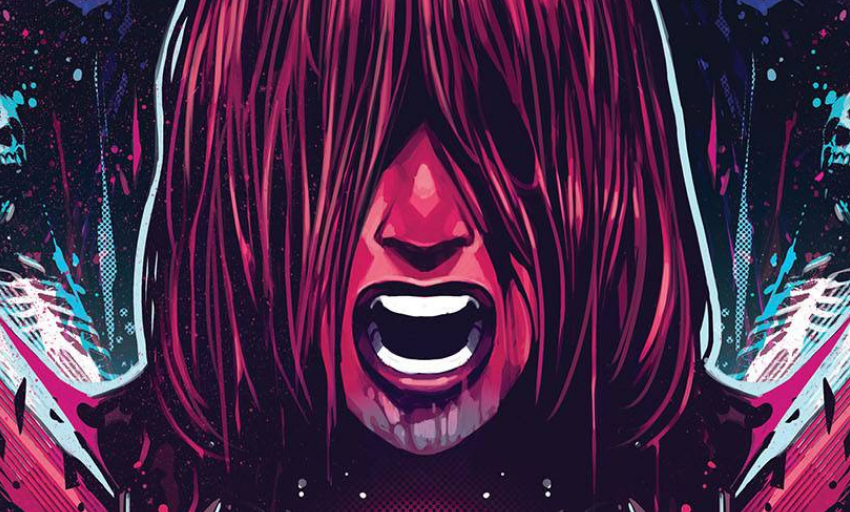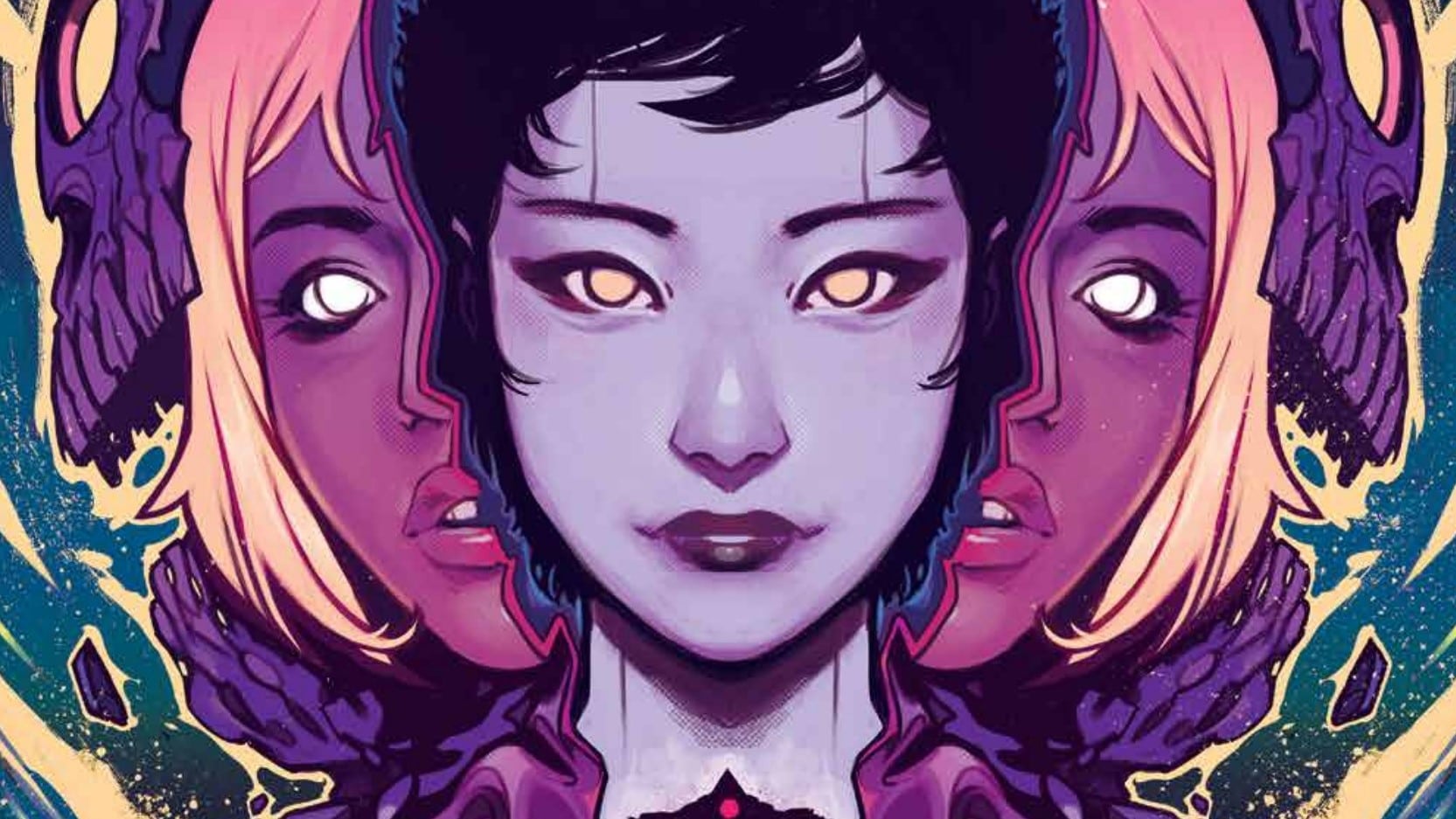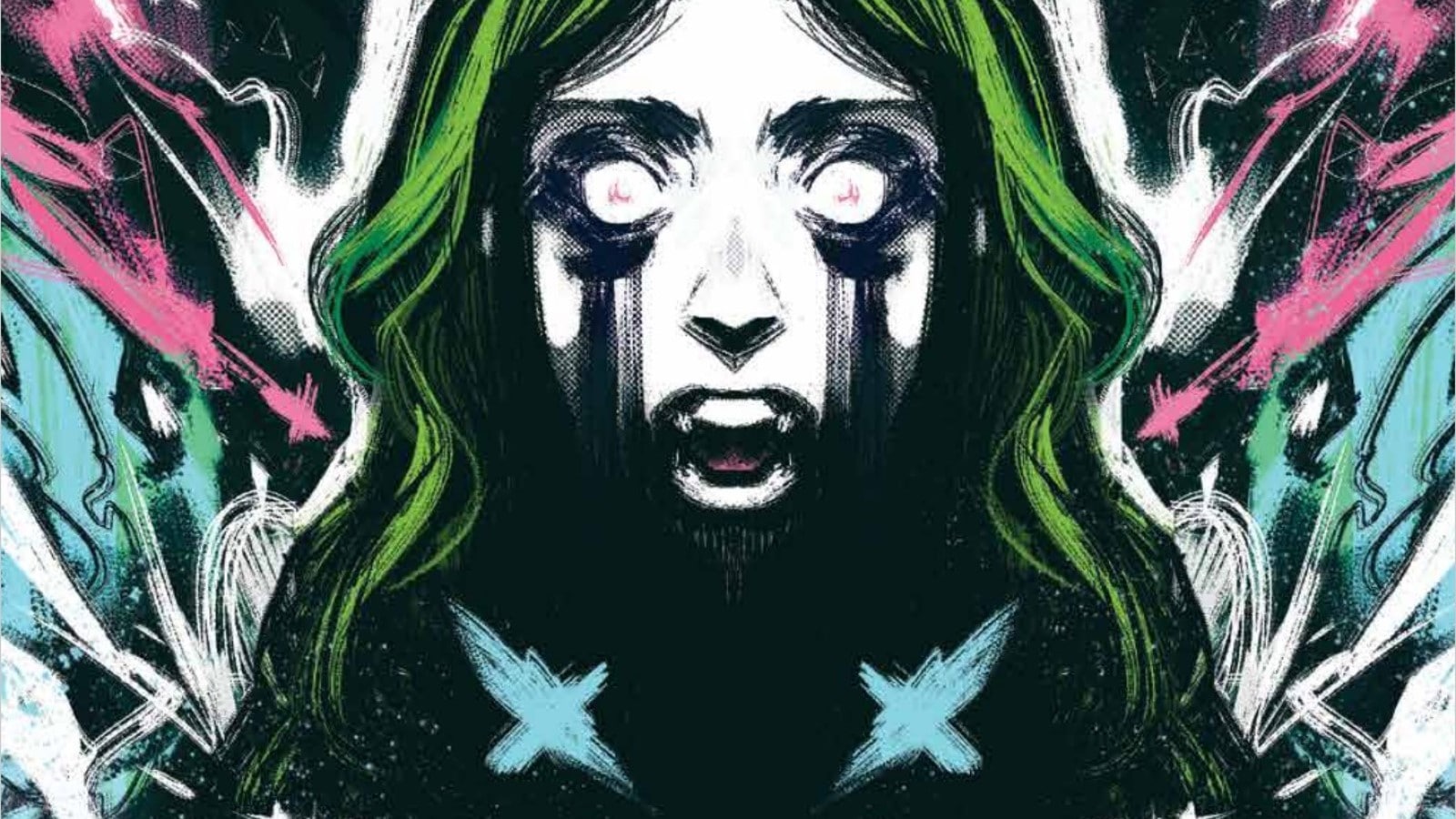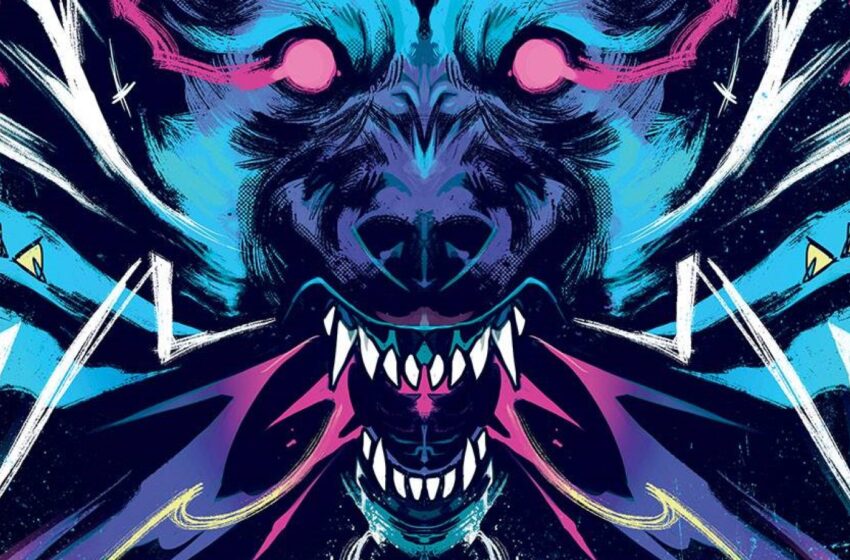The Home Sick Pilots are reunited, but not for long. Who else knows about the ghosts? Who is killing for them? What has been crawling out of the VHS machine at night with blood on its rewindable mind? Be kind as we rewind Home Sick Pilots #4 by Dan Watters, Caspar Wijngaard, Aditya Bidikar and Tom Muller.
Dan Grote: *Screams in Meg*
Forrest Hollingsworth: VINDICATION!
DG: I don’t even want to belabor this intro. We’ve much to discuss. Not all of it Meg-related. Let’s dive right in.
Who ya gonna call?

DG: So, first I thought this book was going to end up being a fetch quest, with Ami going out and collecting all the different possessed artifacts. That was wrong. Then I thought it was about the band each getting converted into the Old James House’s personal monster squad, after Buzz got horseshoe’d up last issue. Turns out that was wrong, too, as Buzz very quickly gets de-horseshoe’d by the horseshoe-head ghost who turns out to be the ghost of Old James. (Go figure!)
And now there are ghostbusters! Four people with monitors on their chestplates show up looking for the old-soldier ghost at the video store and appear to take Buzz into custody. From their introduction in the prologue, they appear to have some kind of ghost prison where all the cells are staticky 12-inch TVs like something out of Poltergeist. Forrest, are these folk friend or foe?
FH: Dan, I think we’ve got a bit of a “the enemy of my enemy is my friend” situation going on here, at least with regard to how Ami views our debuting Teletubbies and is more aware of the house’s tumultuous, sinister inner workings.
Though the execution is obviously different, it reminds me a bit of Todd McFarlane’s Haunt, where you’re trying to examine a character both through the supernatural and the natural — the existential threat (of the house in this case) paired with the more mortal, immediate and tangible one of the troopers. It’s a good, fascinating complication I think, and the weird espionage elements of it add a lot. I’m hopeful it’s more Metal Gear Solid than it is Ghostbusters in the end, if that makes sense.
DG: !
More like Caspar Winning-gard

DG: So in going through this issue I logged a sort of top three “Holy shit, Caspar Wijngaard” moments.
No. 3 is Buzz bounding through Santa Manos in his horseshoe form. It’s very “Hulk jumps through the desert to go fight the Abomination” mixed with a little Rockslide from X-Men. For a hot second, the book stops being neon-punk horror and acts like a superhero book where the hero is discovering his powers and having the time of his life, even if he’s a little scared.
No. 2 is the fight with the videotape monster. When it was just one VHS cassette with a bunch of loose tape it was scary, but when it’s constantly reconstituting itself, ripping up asphalt and parking meters to use as weapons and combining with other videotapes, it’s downright TERRIFYING.
No. 1 is the reprise of the double-page spread of the house from the first issue. Whereas the original was a more muted-in-color, daytime, Scooby-Doo-esque escapade through a haunted house, this version is much darker. The house crumples in on itself, with Ami at the center of it, as girl and house have it out over what exactly the mission is and whether Ami can leave and reunite with her friends. Wijngaard’s standard pinks, purples and blues turn into much darker pinks, purples and reds, as skeletons literally pour out of the closets.
Forrest, what were your favorite bits of art in this comic?
FH: My first pick is also the cross section of the house. Specifically because of how it pairs with Ami’s comments on the “honeymoon” phase earlier in the narration. Where the house in the first issue was decrepit, sure, it was still mostly stable and recognizable — a home, a place where people gather and commune and live, the home that her concerts and early phases of a relationship live in. But it all fades away. The house is a graveyard, it’s not a place for the living but for the dead; the same warm and welcoming memories now feel like a prison of your past mistake, of literal and figurative skeletons in your closet. As you mentioned, the way Wijngaard delivers that, subverting the normal color palette of the book, is just masterful.
Second to that I have to say I’m really fond of the first page, the panels of the television prisons stacked up within the panels of the page, the barely contained static, the way that phantasmal disembodied hand reaches out to try to cross the threshold. It’s so surreal and haunting, and you can tell the team is working hard to keep even very different perspectives within the established aesthetic, and I really appreciate that, the ability to make it coherent and not too disparate.
Return of the Meg

DG: Y’know, Forrest, I was concerned I’d gotten too attached to Meg in the first issue. I tend to fixate on certain supporting characters and get excited when they show up. Jean-Ralphio on Parks and Recreation. The nerdy cop on Stranger Things. Pete Wisdom in the current run of Excalibur. I thought Meg was going to be that character for this series. But then she didn’t show up for three issues. Until this week, when a telltale baseball cap revealed the Old James House had kept her as a backup in case Ami caught wise to its pattern of abuse. OK, that part’s not great, but the point is, our girl’s back, Forrest. Are you excited? I’m excited.
FH: Dan, I’m excited. There’s this prevailing sentiment online that you’ve done something wrong if your stories or character beats are predictable, and I have to rebuke that. If your story is, at least to a degree, predictable, that means you’re grounded, it means you’re foreshadowing and telegraphing correctly, it means your characters are responding to things naturally. That’s not a bad thing!
What I’m saying is we’ve been right about Meg from the first issue and I’m feeling very spoken to. The really excellent narrative beat of the house having a “backup” just like someone might in a bad relationship is there to justify it, but Meg also just has that vibe, and you can’t take that away from us.
Cool Miscellany, Bro
- Remember that first issue when the house walked? That was cool. It does it again on the cover to issue #5.
- The acronym ACAB rose to prominence in the 1940s during U.K. labor strikes and was co-opted in the 1980s by punk and skinhead culture. Dan had to look it up because he hadn’t actually seen it before last year.
- Forrest has been punk since day one and, appropriately, also thinks ACAB.
- Again, Watters captures descriptions of “the scene” perfectly — the rush of finding it, and the disappointment that comes when you find it’s full of Nazis and elitists.
- The horseshoe ghost’s desires are more tangible, and frightening, here but even more so is the implication that it itself may be in debt or burdened by something beyond.







